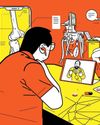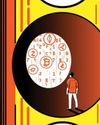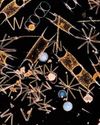
In his story published in 1819, Washington Irving spoke of a villager Rip Van Winkle who fell asleep and woke up 20 years later. So, if a modern Indian version of Rip Van Winkle were to wake up in 2030, what kind of India would he see? He would certainly miss one of the most historic transformations of one of the most potent and promising economic stories of the past few decades, just like the protagonist of Irving’s story had missed the entire American Revolution.
India a middle-income economy now:
The Indian economy is now the third-largest in the world at $8 trillion in real GDP terms, having grown by 7 percent over the last decade (versus the RoW growth of less than 3 percent and assuming the rupee stays constant at 75 to a dollar from 2024). It remains one of the fastest-growing economies in the world (some African nations are growing rapidly but have relatively low mass). The per capita income is now about $4,643, making it a middle-income economy.
The most populous and also the youngest:
With about 1.5 billion people it is the most populous in the world now. Increased education and awareness on population control has helped lower the projected population growth. India’s population would now peak out by 2040 as against earlier expectations of 2055. The median age in India is about 31 years, well below that in China (about 41 years), making it the largest young country in the world.
Rise of women in the workforce:
This story is from the January 17, 2020 edition of Forbes India.
Start your 7-day Magzter GOLD free trial to access thousands of curated premium stories, and 9,000+ magazines and newspapers.
Already a subscriber ? Sign In
This story is from the January 17, 2020 edition of Forbes India.
Start your 7-day Magzter GOLD free trial to access thousands of curated premium stories, and 9,000+ magazines and newspapers.
Already a subscriber? Sign In

Home-Cooked Meal Is Now Greatly Valued
The pandemic has also brought with it an improved focus on hygiene, use of technology in dining, rise of cloud kitchens and resurgence in popularity of Indian ingredients

Paytm 3.0 - Reaching Near Breakeven In Two Years
As of 2020, Vijay Shekhar Sharma’s super app for financial services had run up losses in thousands of crores. Now, as digital payments gets yet another boost courtesy Covid-19, he’s hopeful of reaching near breakeven in two years

THE PANDEMIC HAS CAUSED WOMEN GREATER LABOUR PAIN
Covid-19 has shown that women are more likely to face the brunt of job losses than men, and find fewer opportunities when they want to resume. That apart, several have to deal with increased hours of unpaid work at home and even domestic abuse

LEADERSHIP WILL BE ABOUT SEEING THE BIGGER PICTURE
Leaders must not only guard their teams first during a crisis, but also deal with stakeholders with respect and dignity. And apart from pursuing business goals, they should remain committed to our planet and the environment

PHILANTHROPY SHOULD BE HUMBLE, BUT NOT MODEST
Apart from building a flexible and resilient framework for the future, philanthropists, civil society and the government must work in tandem so that every rupee is absorbed on the ground

INTEGRATED HEALTH CARE, TECH WILL DISRUPT SECTOR
While clinical research will get a boost, having a skilled workforce and public spending on health care will be challenges in the near term

DIGITALISATION WILL HELP IN VALUE CREATION
As the pandemic brings technology and innovation to the core of business and daily life, the next decade will see about 150 million digital-first families in India

Industry 4.0: Climate Revolution?
Augmenting sustainability alongside digital capabilities is an economic, competitive and global opportunity for India’s businesses, but regulations need to reflect intent

EV Dream Still Miles Away
Electric vehicles have remained a buzzword in India for years. But not much has moved on ground due to high upfront costs, range anxiety and charging infrastructure

Living Waters
A virus has caused us to scramble for oxygen but our chokehold on the environment is slowly strangling the very waters that breathe life into us. The virus is a timely reminder: We are merely consumers, not producers of life’s breath on this planet